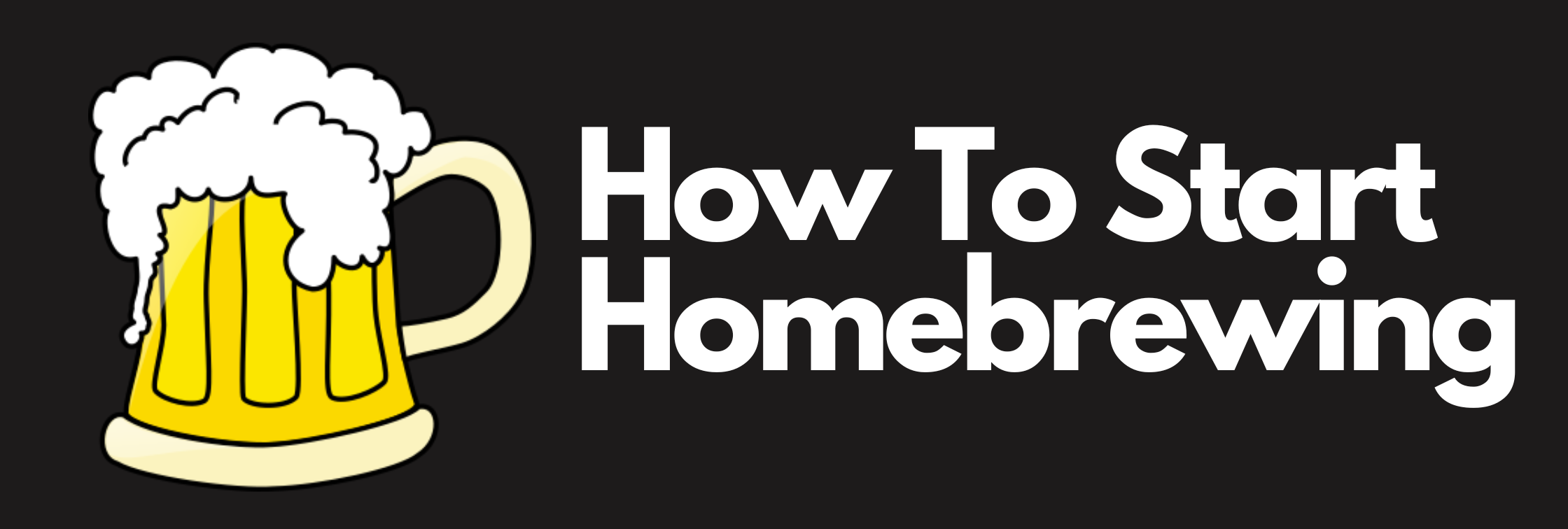With summer just on the horizon, it only seemed fitting to kick off my “Recipe Roundup” series with my Hibiscus Blonde Ale.
Before I dive into that, however, you’re probably wondering what this Recipe Roundup stuff is all about.
Why I’m Doing This
I’ve been brewing so many different beers lately and piecing together all sorts of recipes. I figured this might be a fun way to share what I’ve created so that:
- Others can choose to brew the same recipe (or make their own variation of it).
- They can learn from some of the good and bad things I might have done.
- They can give me some pointers for recipe improvement.
While I have a couple of years of experience under my belt, I am by no means an expert. This is simply a great way to dive into some of the inner workings of both my recipe design process and brew day.
My goal is to try to knock out at least one of these each month. I don’t want to rush things, but at the same time, I don’t want to commit to a schedule I know I may not be able to work out. Hopefully you find these fun, informative, and worth your time!
That said, let’s dive into how these posts will work.
What You Can Expect
Here is a quick layout of what you can expect to see with each post:
- The idea behind it
- The recipe (including all specifics)
- The process (from grinding grain to kegging/bottling)
- The end product (including tasting notes)
- Final thoughts
I think you’ve heard enough of how this will all flow together, so let’s just dive right into the good stuff!
The Idea
I originally created a Blonde Ale recipe that has done pretty well each time I’ve brewed it. It’s got a nice balanced profile – very clean and crisp with a touch of malt sweetness and noble hops to balance things out. Overall, it’s a great beer. Perfect for the summer, yet light enough to drink year round.
Heck, I even (unexpectedly) won a gold medal with it in the Midwinter homebrew competition this year!
After working up various recipes for summer beers, I knew wanted to do this one again, but with a twist. Just something different enough that would compliment the beer and not overpower it to the point that it takes away the original appeal of the base beer.
I saw some hibiscus flowers at my local homebrew shop, and that’s when it hit me – why not brew up that same Blonde Ale recipe, but with a hibiscus addition? Not only would I get some unique berry flavors to play with the malt, but it would also change the color up quite a bit.
Is it groundbreaking? No, but damn, it sounds pretty tasty!
The Process
The recipe below is for a batch size with a final volume of 1.5 gallons*:
| Grain | Amount (lbs) | Percent |
|---|---|---|
| 2-Row | 2.7 | 87% |
| Caramel 15 | 0.2 | 6% |
| Honey Malt | 0.1 | 3% |
| Carapils | 0.1 | 4% |
| Total | 3.1 | 100% |
| Hops | Amount (oz) | Time | AA % | IBU |
|---|---|---|---|---|
| Mt. Hood | 0.25 | 60 min | 5.3 | 16.3 |
| Mt. Hood | 0.15 | 15 min | 5.3 | 4.9 |
| Mt. Hood | 0.1 | 5 min | 5.3 | 1.3 |
| Mt. Hood | 0.1 | Flame Out | 5.3 | 0.0 |
| Total | 0.6 | - | - | 22.5 |
| Yeast | Amount |
|---|---|
| Fermentis Safale US-05 | 1 pack |
| Other Additions | Amount | Time |
|---|---|---|
| Irish Moss | 0.25 tsp | 15 min |
| Hibiscus Flower | 4 tsp | 5 min |
| Hibiscus Tea (2 tbsp steeped in boiling water for 5 min) | 1/2 cup | Keg |
| Williams Warn Clarifying Agent | 1 tbsp | Keg |
*Note: I adjusted my water using Gypsum and Calcium Chloride, but forgot to save the entire profile. I just recently started adjusting my water. Fortunately, my notes are a lot more detailed now (including the full profile).
I use the Brewer’s Friend Water Calculator, which is free and fairly simple for beginners to get started using. I highly recommend it!
Brew Day
First, I milled up all the grain using my hand-crank Corona Mill (which is perfect for small batch runs like this).
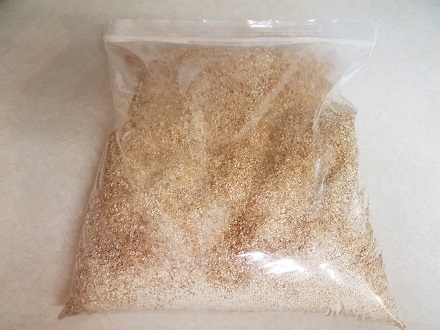
Measured out my water salt additions, which were 2g Calcium Chloride and 1g Gypsum (which now I realize I could’ve gone even less on this).
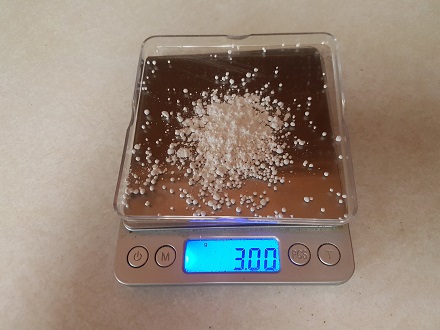
After adding my salts to the water, I fired up the gas to get things up to my initial strike temp before mashing-in.
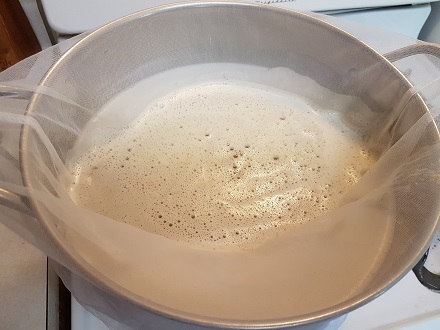
The mash was covered in an insulated bag and sat for 60 minutes at a temperature of 152.5°F. During this time, I measured out all of my boil additions.
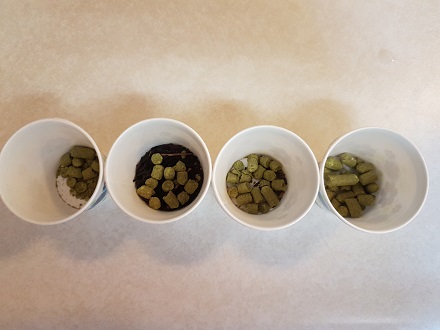
Once boil was reached, I added all additions according to the schedule listed in the table above. After a full 60-minute boil, the wort was chilled down to a pitching temp of roughly 67°F using my stainless steel chiller.
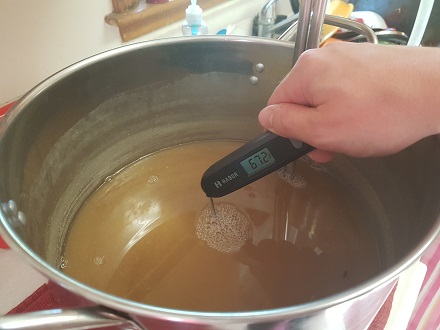
A quick OG read showed this clocking in around 1.053, which was nearly right on the head for my targeted OG.
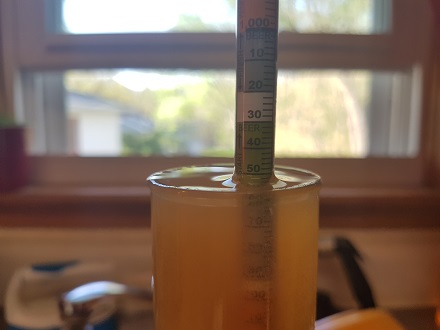
Yeast was pitched directly (no rehydration) and the beer was put into my fermentation chamber to ferment for 14 days at 66°F.
Packaging
After steady gravity readings of 1.013 (about 10 days after fermentation), I placed the bucket into my keezer to cold crash for two days before kegging.
Due to the lack of color that I clearly perceived on brew day, I decided to make a hibiscus tea to try to draw out more color and flavor.
Following the table above, I placed a pot with a small amount of water on the stove and heated it to a boil, at which point I immediately killed the heat and added the hibiscus flower directly.
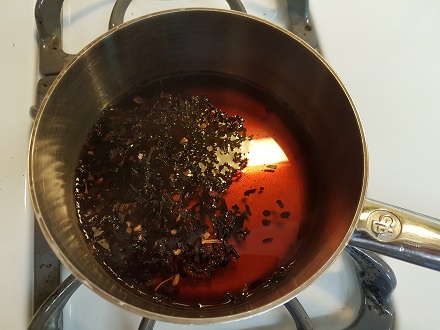
The hibiscus flower soaked in the water for 5 minutes, which was then poured through a sanitized strainer and mason jar.
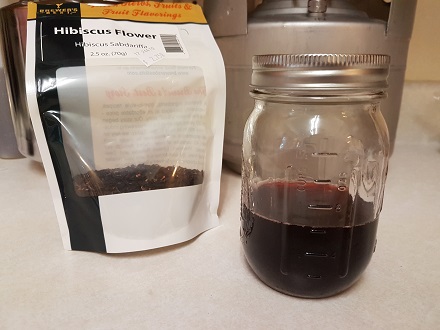
Once this was cooled, I poured off 1/2 cup and placed it into a sanitized keg along with 1 tbsp of Williams Warn Clarifying Agent.
After the beer was racked off into the keg, I put it on 30 psi to seal the lid before purging the keg several times to remove oxygen.
One thing I like to do is roll the keg back and forth for a couple minutes at 30 psi, just to give things a jump start. Once I’m finished with that, I drop the pressure on my regular to 12 psi and purge the keg to equalize the pressure. After 4-5 days, the carbonation is perfect.
Since I typically have enough batches in rotation, the “set it and forget it” method works out great for me.
The End Product
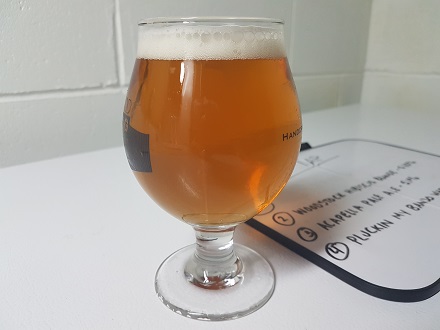
Appearance: As you can tell, I didn’t quite get the deep pink hue that I was looking for (or any at all, really). Looks like the next iteration of this will be calling for a significantly larger dose of hibiscus tea. Still, the beer presents itself well and I am happy with how it looks overall.
Aroma: Upon the first whiff of this, I got the initial impression from the hibiscus coming through. A sweet berry-like and floral mixture with a hint of bread from the malt. Very little hop aroma is present, which is what I typically prefer in this style.
Mouthfeel: On point for the style. Nice, medium-high carbonation has this feeling exactly what you would expect in a Blonde Ale. Body is light, yet fells well-rounded, which makes it even easier to drink.
Taste: Although it doesn’t appear like what a normal hibiscus beer would look like, the taste is there. Subtle notes from the hibiscus flowers come through in the front, along with the sweetness prevailing itself from the Honey malt. Light grainy/bready flavor helps round things out, with a slight tartness and berry flavors from the hibiscus flower on the finish.
A friend of mine also mentioned a white-wine note on the front, which I can totally relate to. Not sure is that is from the hibiscus and the sweetness of the Honey malt playing together or what, but it isn’t unwelcoming by any means.
Final Thoughts
All in all, this turned out to be a very easy-drinking summer ale! The hibiscus flower doesn’t overpower the style, and I actually enjoy the slight tartness rather than the overpowering flavors of hibiscus, which makes it easy to reach for another pour.
I will admit that after doing some research and doing smaller batches, I was apprehensive on using too much hibiscus flower. I figured for my first run of this recipe, it would be best to go lighter than heavier. In hindsight, I’m glad I did. It gave way for an interesting twist on the base style.
If I had to do this one again, I would adjust the hibiscus tea by at least doubling (if not tripling) the amount of hibiscus that I used initially, just so I could draw some more color from it. That was the only downfall and the one improvement I would make. The fermentation profile was clean and the balance was inline with what I wanted it to be.
Hell, even my wife (who is NOT a craft beer junkie like myself or even much of a beer drinker at all) had a pint of it a few nights ago and took down the whole thing. If that’s any indication, I’d say it turned out to be a pretty decent beer. My guess is that the keg isn’t going to last much longer!
So, what do you think? Let us know if you try out the recipe or have some suggestions on improving it by commenting below!
